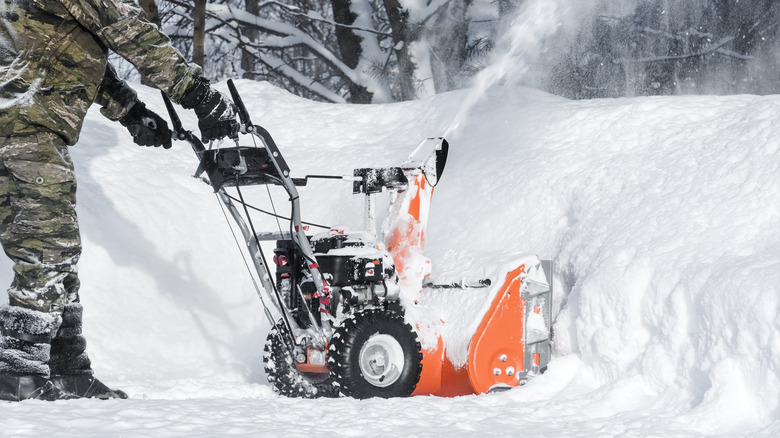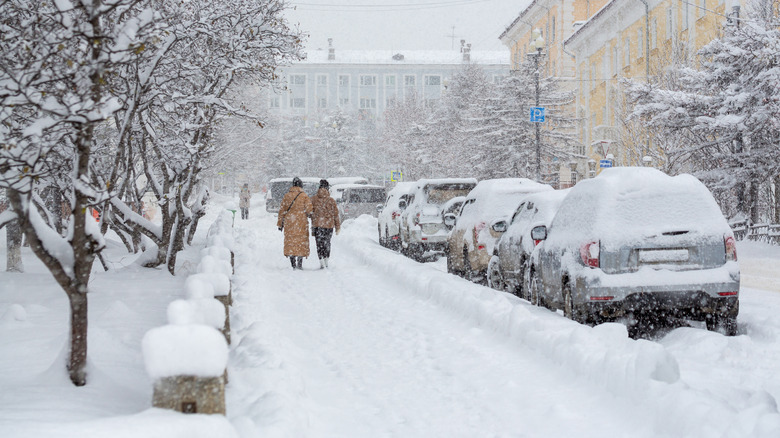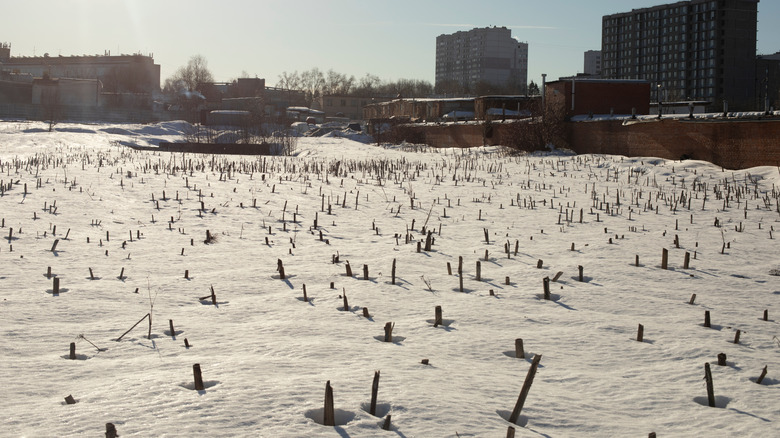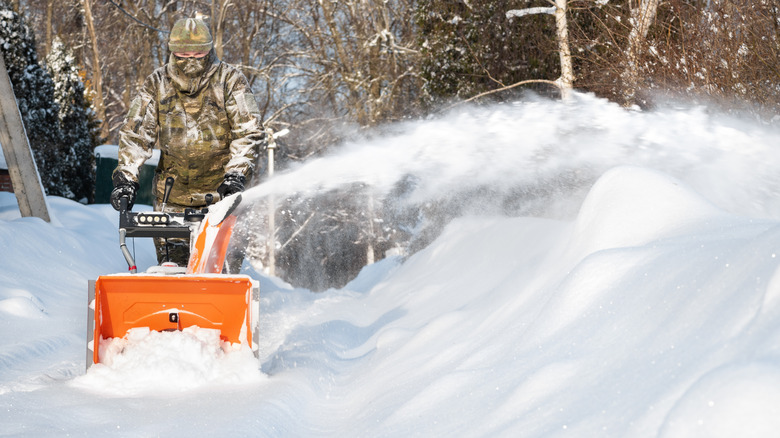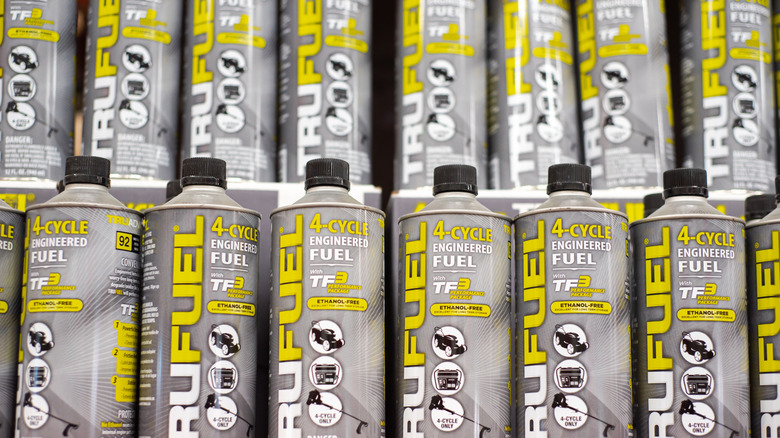5 Mistakes To Avoid When Using Snow Blowers This Winter
When winter is in full swing and the snow starts piling up, you come to a very unfortunate realization: snow is aesthetically pleasing, but incredibly annoying to actually live with. Even if you're fortunate enough to have a private, enclosed garage, if the snow completely blankets your driveway, you're not going to be able to get to school or work in the morning. There's also the matter of walkways, patios, and other parts of your property that people might need to walk around on. Too much snow means nobody's getting by.
The best way to clear out large quantities of snow without breaking your arms with a shovel is to get yourself a snow blower from your local hardware store like Home Depot. A snow blower, when used properly, can make short work of a snow-blanketed property, saving you tons of time and effort and ensuring everyone can get where they need to go. However, no matter how convenient a snow blower may be, it's important to remember that it's a heavy piece of machinery, and should be treated with the same care and caution as a lawn mower or a chainsaw. If you don't take the proper steps and precautions when operating a snow blower, you might end up making the snowy mess worse, or even hurt yourself.
Waiting until it stops snowing completely
Your instinct will probably be to wait until the snow stops before you go out to clean things up with the snow blower. After all, if you go to deal with it while it's still falling, it's just going to keep piling up even after you've cleaned things up. While this makes sense on paper, though, this is actually a situation where you should ignore your instincts and go get it done immediately.
While a snow blower is good at removing large quantities of snow, it's not an indomitable force of nature. Any snow blower, even a powerful one, can only handle so much snow at once before overheating or getting clogged. While it would be nice to only have to blow snow once, if a lot of it piles up before the storm stops, the piles may become too big for your blower to realistically deal with. Even if it's still actively snowing, once the piles become big enough to be noticeable, you should get out there right away to start cutting them down to size. Even if it's still snowing, if you start moving snow away from critical areas, it'll be much easier to finish the cleanup once the storm stops.
Not removing debris beforehand
Snow blowers utilize powerful auger mechanisms to scoop snow up from the ground and funnel it through the chute. If all you're picking up is snow, this is perfectly fine, but oftentimes, there's a lot more than just snow on any given lawn or driveway. Any given surface around your home could be littered with all manner of debris, from natural stuff like rocks and twigs to personal belongings like dog leashes, kids' toys, and the morning paper.
If an object is small enough, it might make it through the auger and out the chute, though it could still become a mildly dangerous projectile. However, if an object is too large for the auger to handle, the entire mechanism is going to get jammed up, which can lead to lasting damage to the blower's internal components. To prevent this from happening, you should give your blowing path a thorough inspection before you pass over it with the snow blower. If you find any debris, pick it up and move it far out of the way.
Only blowing the snow a short distance
If you're not used to operating a snow blower, you might try to take some shortcuts to lessen the impact of the job. For example, if you're moving snow off a large driveway, you might just do one pass through the center, only moving the snow off to the sides of the driveway rather than off it entirely. This might sound like a handy shortcut, but you're actually setting yourself up for more work later. Moving snow in this way just creates large, wedged piles on the sides of your driveway, which can easily fall back over into the driveway proper. Not only that, but those piles are made up of both the center and side snow, which means they're even denser than they were before. That's going to be a big load to put your snow blower through.
Rather than just nudging the snow on your driveway off to the side, you should endeavor to launch it as far away as you possibly can. That way, even if it piles up, it won't be in a spot where you'll need to move it again. There are a few ways you can optimize throwing distance, including adjusting the angle of the chute and hitting smaller piles of snow with a higher RPM. Don't forget to blow with the wind, too, so it doesn't fly back into your face.
Using old fuel
Considering you only use a snow blower in one out of four seasons in a given year, you probably don't spare much thought to the fuel that powers it. Like the blower itself, you probably just keep a canister of fuel in the back of the garage, dusting it off when it's that time of year again. However, just because you only use it once a year, that doesn't mean the fuel magically stays fresh the whole time. Just like the fuel you use in your car, the fuel for a snow blower can go stale if improperly stored. If you try to use old, stale fuel, you're more likely to damage your snow blower than power it.
The best approach is to use fresh fuel every year, preferably a pre-formulated winter blend that's ready to run in cold temperatures. If you're using ethanol-blended fuel, use E-10, or fuel with a 10% ethanol blend, as this kind will get you the best fuel economy without putting your snow blower's engine at risk of corrosion. Whenever the snowy season ends, you should also remove the fuel completely from your snow blower's tank so it doesn't congeal. This is all assuming you're actually using a gas-powered blower, rather than a battery-powered blower like the ones Ryobi offers.
Dressing improperly
Obviously, if you're out blowing snow in freezing temperatures, you're going to want to bundle up to stay warm. However, dressing for a casual stroll through a winter wonderland is not the same thing as dressing for optimal snow blower operation. If you try to handle your snow blower in a fluffy scarf and fuzzy mittens, you're not only going to have a much harder time getting the job done, you might actually be at risk of injury.
The absolute most important thing to consider in a snow blower's ensemble is sturdy footwear. You're going to want a pair of tough boots that can firmly grip the ground beneath you. Not only do you need the extra purchase to push that heavy piece of equipment, but you want to keep your footing in case there's ice under the snow. Besides that, you'll want some warm face protection like goggles and a mask, a reflective vest so everyone can see you working, and some insulated work gloves. You should also refrain from loose articles like scarves, as they could end up getting caught in the auger and dragging you down.
